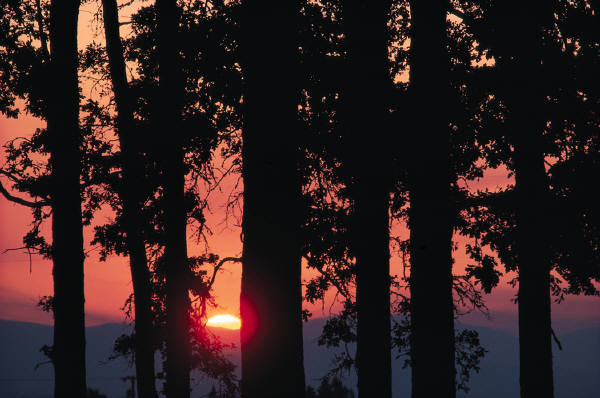Navigation Skills: How to Navigate without a compass
Survival situations usually arise when least expected. For that reason, individuals finding themselves in such situations tend to not have the equipment that would make easier to survive. This article gives you a brief summary of important navigation skills and how to navigate without a compass in case you are ever in need of finding your way around, but are not properly equipped.
Using Trees
Trees do a lot more than provide firewood and provide a place to sit out of the hot sun. They can also be used to navigate. This is a valuable bit of knowledge you will need to familiarize yourself with. If you are ever lost and do not have a GPS or compass, trees can help point you in the right direction.
Although this is certainly not a fail-proof exact navigation method, it can get you headed in the right direction. By looking at a tree’s growth, you will be able to get a good idea of which way is south and then from there you can figure out the rest.
Trees want the sunshine. Because of this, you will notice one side of the tree, the south facing side, will have more branches and be fuller in general. Of course, this only applies if you are in the northern hemisphere and the sun is in the southern sky. Before you think you got it, wait, there is more information.
You cannot pick any tree to use as a navigational tool. Preferably, it should be a tree somewhat alone with its growth uninterrupted by other trees, buildings or whatever. You want a tree that has been allowed to grow freely. In this video, you can see a good example of the heaviness on the south side of a tree. It should also be mentioned that rot or a lack of nutrients can interfere with a tree’s natural tendency to be heavier on the south side. However, this is not all that common and in most cases, this method will work.
As always, you have to get out there and see for yourself. Take your compass along and see if you can identify which way is south by using a tree. Check your guess with your compass. This is a great tool to add to your navigation skills set.
Using Moss
I know you have probably heard the rule about using moss to determine direction. You know, the one about moss only growing on the north side of a tree. I am sorry, but that is simply not accurate. If you have ever been outdoors, you know moss grows all around a tree. However, there is a small amount of truth in it.
With that said, you can use moss to give you a good idea of which direction is north. It is not a totally broken method. Moss does love to grow where it is cool and damp, or on the shady side of a tree. The trick is knowing the difference between moss growing on the north side and the moss that grows all the way around a tree.
You can watch this video to see the difference in moss taken from the northern facing side and the southern facing side of a tree. The lush green moss is typically found on the north side. The dry, brittle and faded green moss is found around the rest of the tree trunk where it is exposed to the sun for a better part of the day.
Now that we have established that, I must throw another little kink into this method. There are plenty of trees that live in the shadows of others. Those trees will likely have lush green moss growing all around them and totally debunk the moss method. This method is meant to be a very rough directional guide and will never be a full-proof way of determining direction. You should not rely on it as the only one of your navigation skills.
Using a Hillside
You can also use a hillside to determine direction. This method can be used any time of the year, but during the winter when there is snow on the ground, it is really simple to use. Typically, snow will melt off the south-facing hillside first. If there is no snow on the ground, you can still determine the southside by looking at growth on the hillside.
You probably already know plants need plenty of sunshine to thrive. Because of this, you will see more pioneer or lone species popping up on that south-facing hillside. Plants will work to bind the earth together. Things like pine and cedar trees and rhizome ground species will likely be prevalent on the south side. If you are simply looking at a cleared area, you will still be able to determine which side is facing south.
Look at the video and you will notice a lot of pine trees along one side. This is the side that gets the most sun, or, the southern facing side. Learning how to navigate with tools is great, but when those tools are unavailable or fail, you will want to have a set of navigation skills ready to help guide you in the right direction.
About The Author
Craig Caudill is an outdoors enthusiast. Among many other outdoor survival topics, he teaches about how to prepare emergency survival kits at Dan’s Depot. He is also the chief instructor at his Nature Reliance School.





